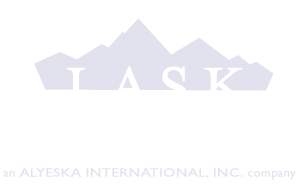Clinical trials are research programs that are used to test the effectiveness of different interventions people go through if they have a sleeping disorder. They are used to find new and improved methods of treating and evaluating a certain condition. These trials can also be used to find ways to prevent diseases. There is no guarantee when it comes to clinical trials and each participant is always exposed to some form of risk factor. These trials are run over a course of phases which can span from several weeks to several years depending on the study. Data capture software is often used to record the findings of each study in order to present results in the best way possible.
What Happens in a Sleep Disorder Trial?
Researchers observe how patients respond to treatment in a sleep disorder clinical trial. They closely monitor how patients progress throughout the trial and may follow up with patients after the treatment phase of a trial has ended to find out more about the effects of the treatment. You can learn more at withpower.com.
Study Participation in Sleep Trials
The participants of clinical sleep trials are chosen at random to take part in the consumption of either a new treatment or the treatment that has already been occurring. The members will not be told about which treatment they are receiving as this then keeps things completely random.
The use of randomization is used to prevent any form of bias from occurring, either from potential human occurrences or choices that could happen, along with other treatments not related to the trial itself. If standard treatment isn’t available to be tested alongside the new one, a placebo is often used. When a placebo is introduced into a test, all participants will be notified that they could be taking one instead of a more active drug.

Clinical trials are usually split into four different phases:
Phase 1 – To determine whether a new treatment is safe, a small number of patients undergoing clinical trials. Only a few participants in phase I trials are not treatable by other known therapies. Healthy volunteers are also used in phase I trials to assess the safety of a particular treatment.
Phase 2 – Studies in clinical trials are conducted to determine whether a given treatment is effective for a particular condition. Researchers also gather information concerning the treatment’s side effects. Because of the risks and unknowns involved, only a limited number of people are included.
Phase 3 – New treatments for sleep apnea are compared with placebos or to standard treatments. The researchers determine which study group has the fewest side effects and shows the greatest improvement in this phase.
Phase 4 – Studies conducted as part of a sleeping disorder treatment’s post-approval are known as clinical trials. These trials are designed to provide detailed information about the treatment and answer questions that may have arisen during other stages of the trial.

If you’re thinking of participating in a clinical trial for sleeping disorders, here are some important questions that you should ask your doctor before embarking:
Does the study have a purpose?
Has any previous research been completed on the treatment being shown?
How does the study differ from standard treatment options?
What is the most common outcome with or without the treatment?
Are standard treatments available for my condition?
Clinical Sleep Trial Risks
Each study in clinical trials for sleep disorders takes steps to protect participants. The decision to participate in a clinical trial depends on you so considering the risks and benefits is very important. You should discuss these risks with your doctor before deciding to take part.
Giving Importance to Sleeping Disorders
Patients are encouraged to speak with their doctors about their routine by taking the initiative to talk about the amount of time they sleep, the kind of nap they take, etc., including all details.
Not everyone understands the severity of these issues, and not having a proper understanding of the mental and physical effects can be dangerous. Negligence is being slowly prevented with a conversation between patients and primary care physicians. This way, people can give detailed accounts of their sleeping patterns and find out how it affects their daily routines.
What to do if you have a sleep disorder
If you believe you may be suffering from a sleep disorder you should talk with your primary care physician about your symptoms. If your doctor believes that your symptoms are signs of a sleep disorder he will usually refer you to a sleep clinic to have a sleep study.
If you do not have a primary care physician you can contact a sleep clinic in your area for a consultation with a sleep specialist to determine if a sleep study is the best approach for diagnosis and treatment.
The Alaska Sleep Clinic has been helping diagnose and treat a variety of sleep disorders for over a decade. As the most trusted sleep experts in the state, we have helped tens of thousands of Alaskans suffering from sleep disorders get the therapy they need for better sleep at night.
Diagnosing patients is the easy part, helping patients maintain therapy compliance is one of the greatest hurdles a sleep clinic can face for its patients. The Alaska Sleep Clinic has one of the highest successful compliance rates for patients in the country due in part to a comprehensive program that helps patients maintain therapy through remote monitoring, automatic equipment replacement alerts, and the latest and greatest equipment for all of our patients.
If you live in Alaska and would like to have a sleep study, click the link below to receive a free 10-minute phone call with a certified sleep educator now.









